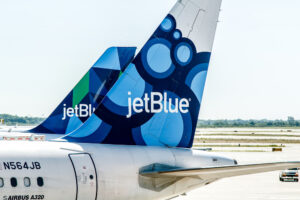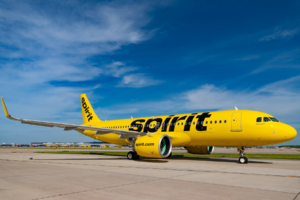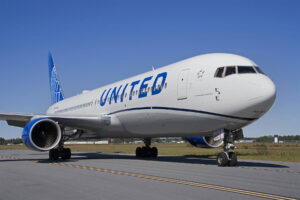Airlines Focus on Better, Not Bigger, Seats

Interior manufacturers work to create thinner, more comfortable seats for flyers.
In the challenge to get more flyers on airplanes, cabin manufacturers are focused on building thinner, more comfortable seats instead of bigger seats with increased pitch. The Los Angeles Times found the latest in air travel cabins on display at the 2017 Aircraft Interiors Expo in Long Beach, California.
As airlines leave between 28 and 30 inches of pitch between economy seats, carriers are looking at ways to increase the number of flyers aboard an aircraft while creating a comfortable ride. American recently announced they would install thinner seats during a rebuild of their narrowbody aircraft beginning in 2019, while Boeing projects the need for over 37,000 new aircraft – meaning plenty of seats will be needed.
In response, aircraft interior designers are working to build seats that provide better comfort for the passenger, without getting wider or offering more pitch. Huntington Beach, California seat manufacturer Lift are experimenting with ergonomic seats featuring three types of padding. Other manufacturers, including Acro, are experimenting with designs that use curves to create more knee room.
The seats on display at the expo could soon be coming to airlines’ cabins in the future. Low-cost carrier AirAsia X is reported to install the Mirus seat, a carbon-fiber seat which meets safety regulations at a lighter weight, while Lift is working with Boeing to custom fit their seats to the Chicago-based manufacturer’s aircraft.
Additional experiments under consideration include seats with sliding bottoms to prevent reclining into other passengers and honeycomb padding to improve comfort while decreasing weight. The airlines goal is to increase and improve seating, while reducing weight to save on fuel costs while operating aircraft.
[Photo: Shutterstock]






















Quote: "How can you have an articulating seat with the cushion sliding forward when there isn’t enough space for your knees anyway"?? That's for the reclining passenger to make a decision about. Why should he be able to reduce the space of the person behind him. Reclining also reduces the knee space for the person behind. The airlines should make several rows of non-reclining seats and then charge a small fee for reclining seats. A great way for the airlines to make more revenue with another add-on fee.
How can you have an articulating seat with the cushion sliding forward when there isn't enough space for your knees anyway ??
Passengers look for the lowest fare because who in their right mind would pay a dime more than necessary to be trapped in hard, narrow seat with no leg room? It's a classic race to the bottom.
The article says: "Additional experiments under consideration include seats with sliding bottoms to prevent reclining into other passengers". Experiments??? These kinds of seats are called "articulating" seats, and they've been around for quite some time. American Airlines has had them on many of their 738s for at least a few years, and they weren't the first airline to use them. I wish all airlines would adopt articulating seats in any cabin where reclining in normal seats can cause problems for the person behind you.
Major US carriers have already reduced the price on (domestic) business and first class seats for several years, making upgrades much more elusive for elites. Award redemption has become MUCH more difficult, requiring MANY more miles. They have also added premium economy, yet such are often left empty, or given to passengers paying coach fares. Airlines fully understand that the average passenger is focused on finding the lowest fare. Consumers will whine and complain about reduced comfort and service, but quickly forget when considering the next trip, buy on price.